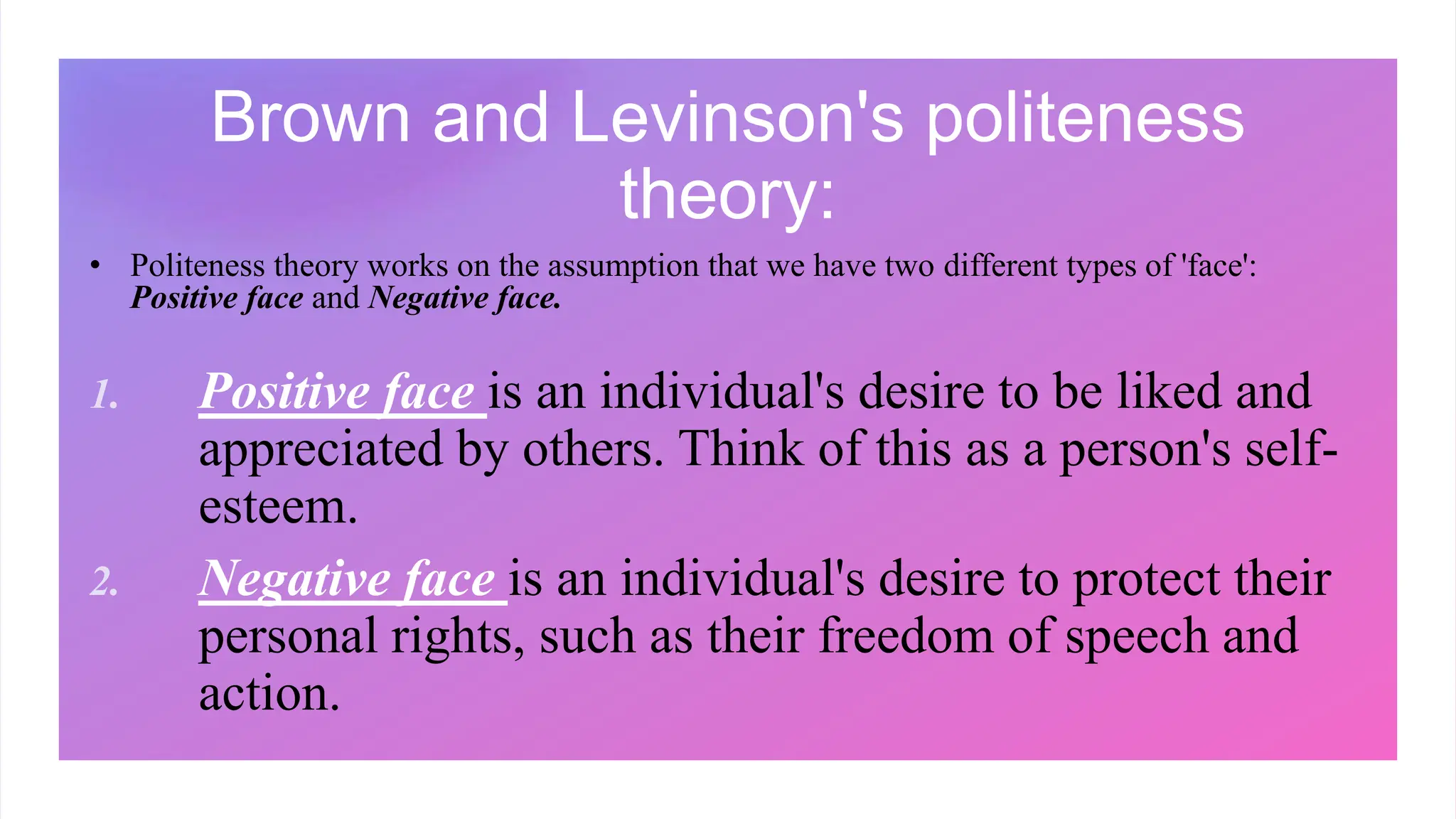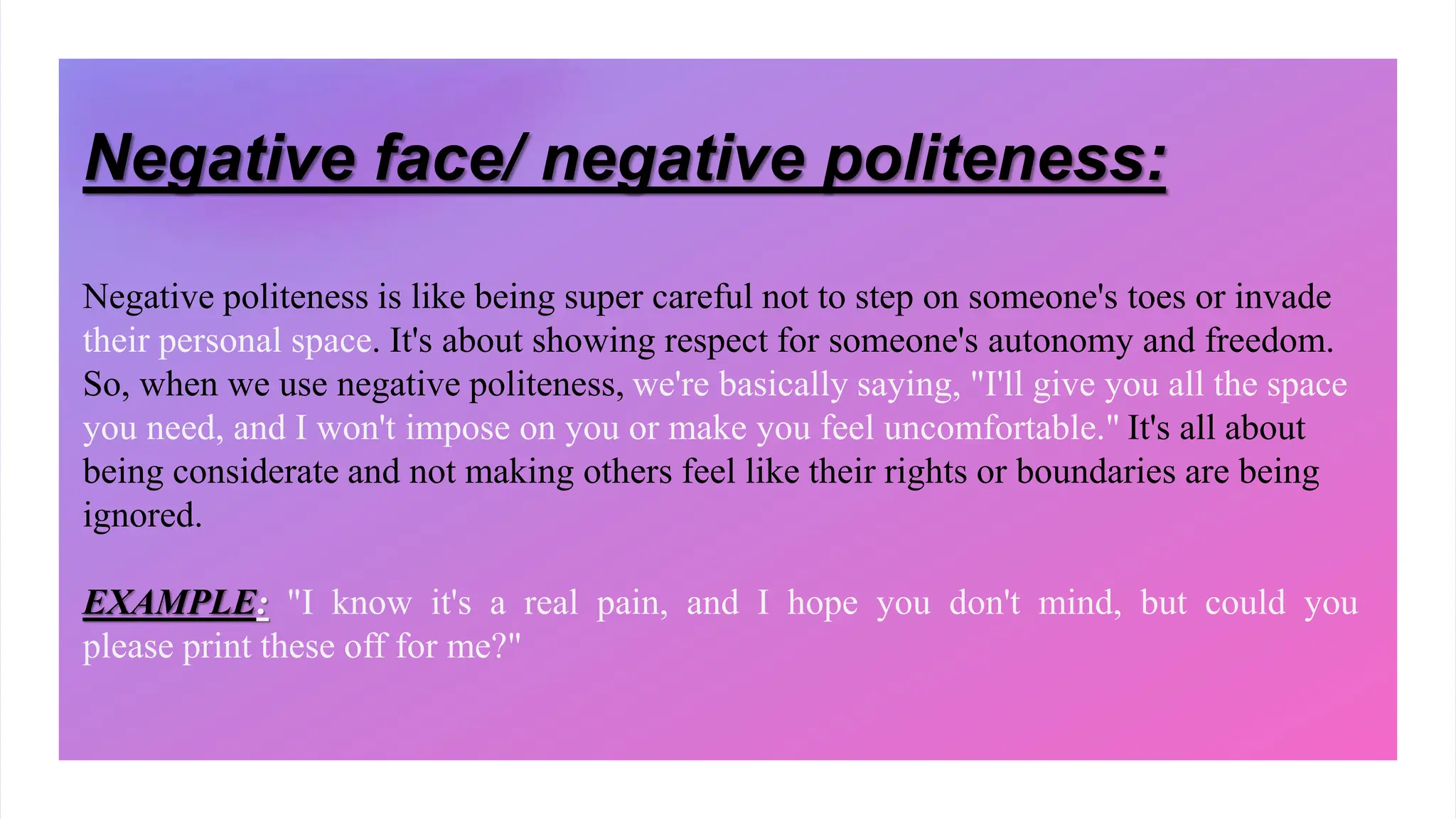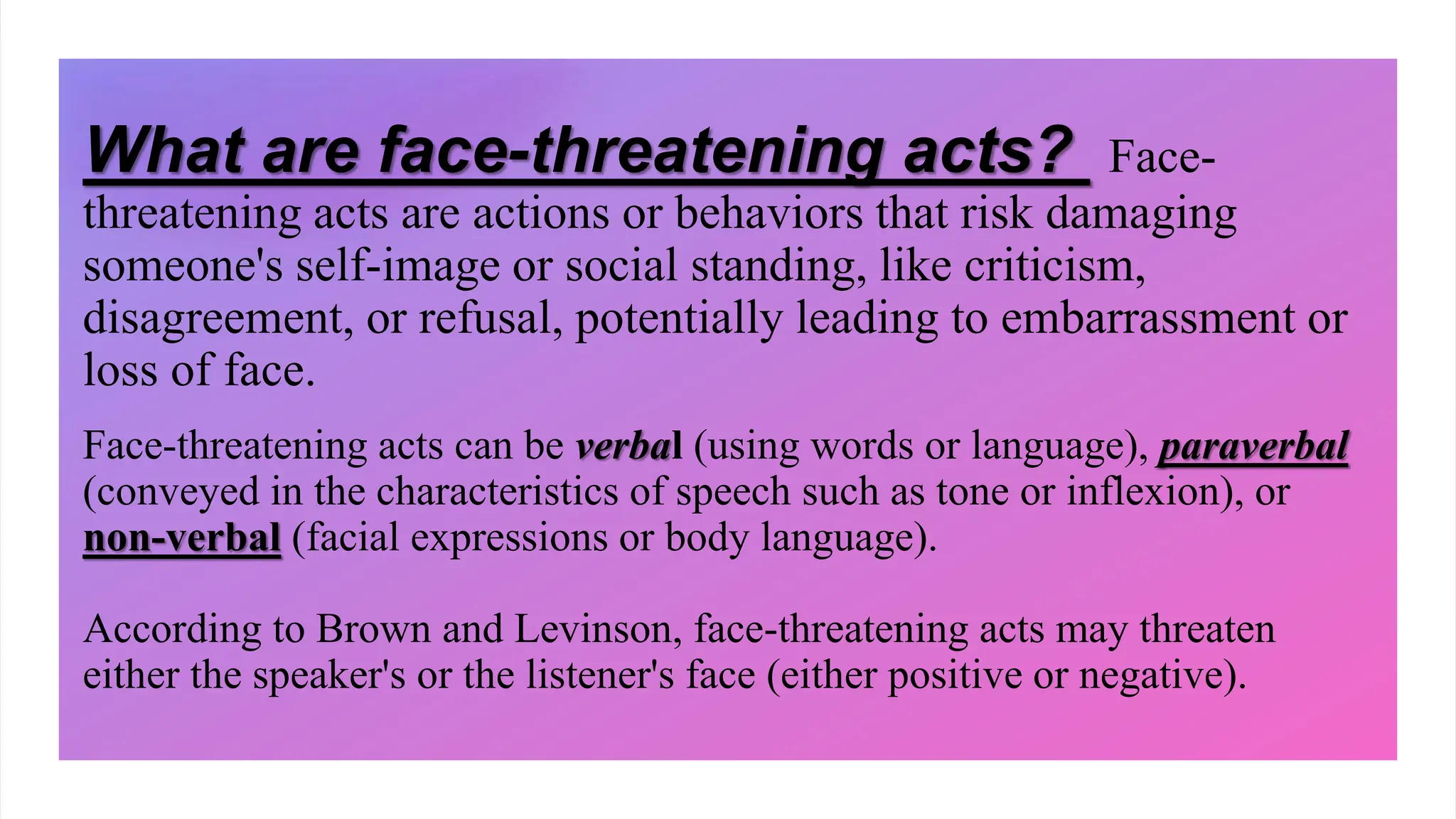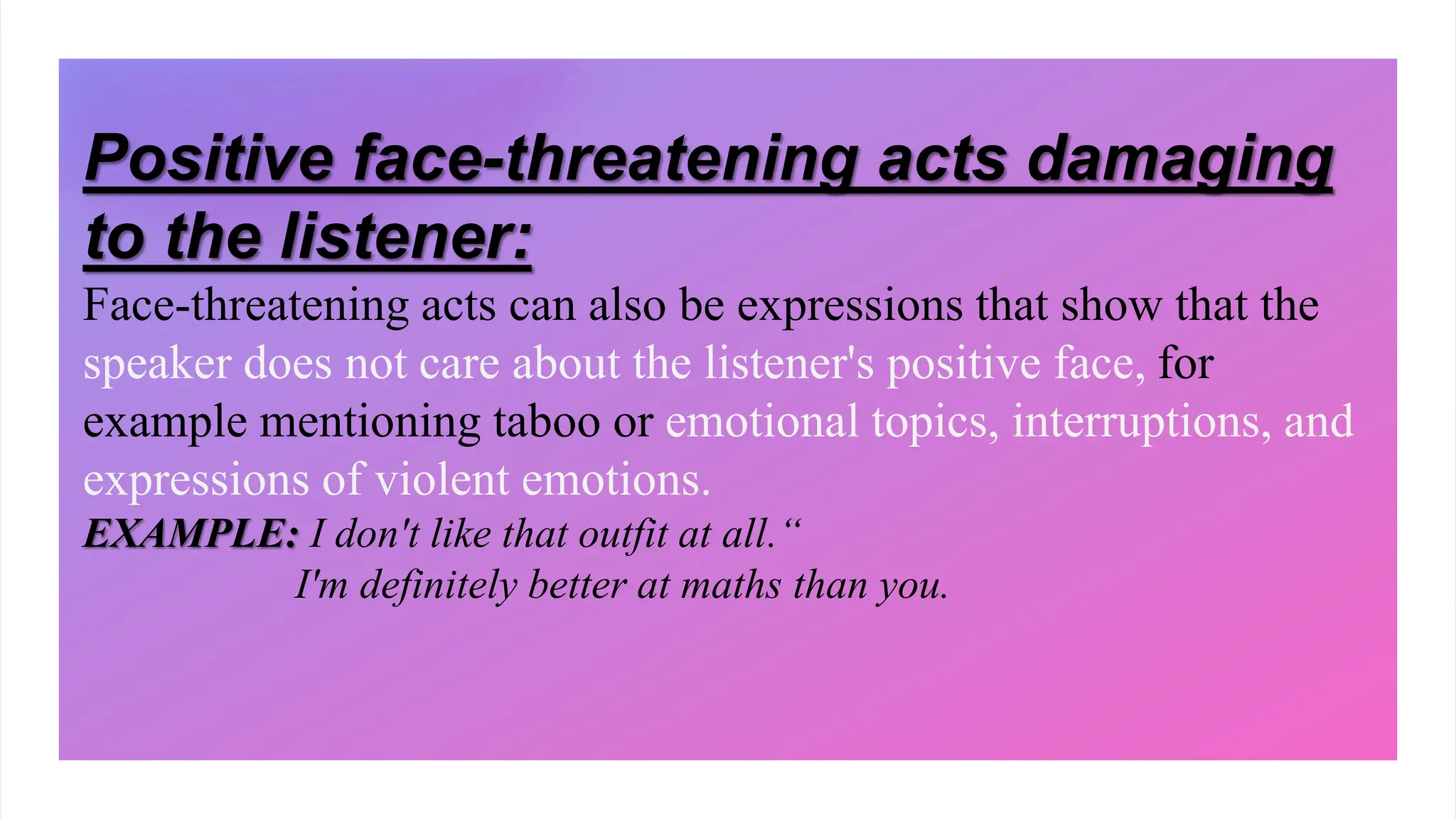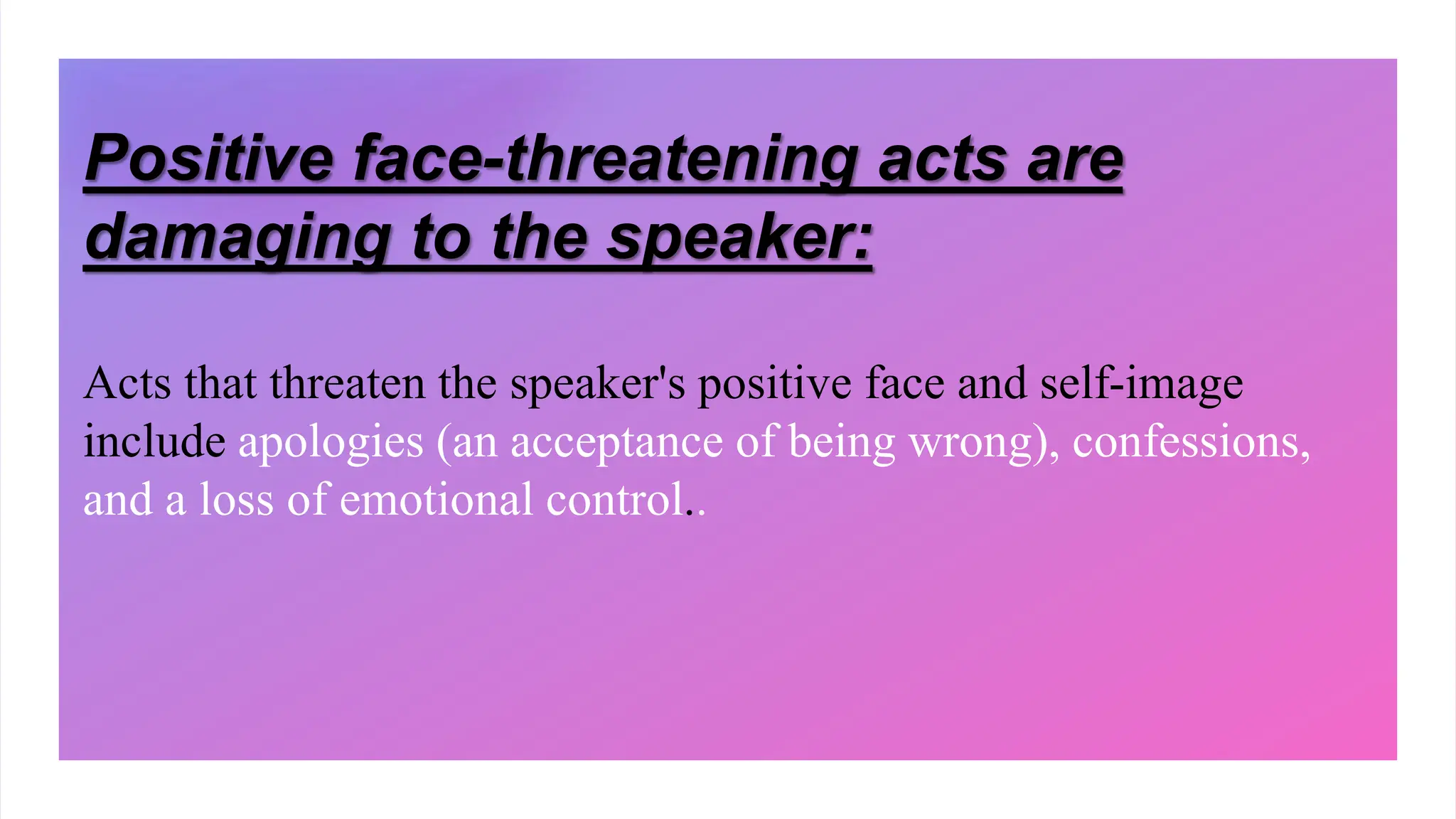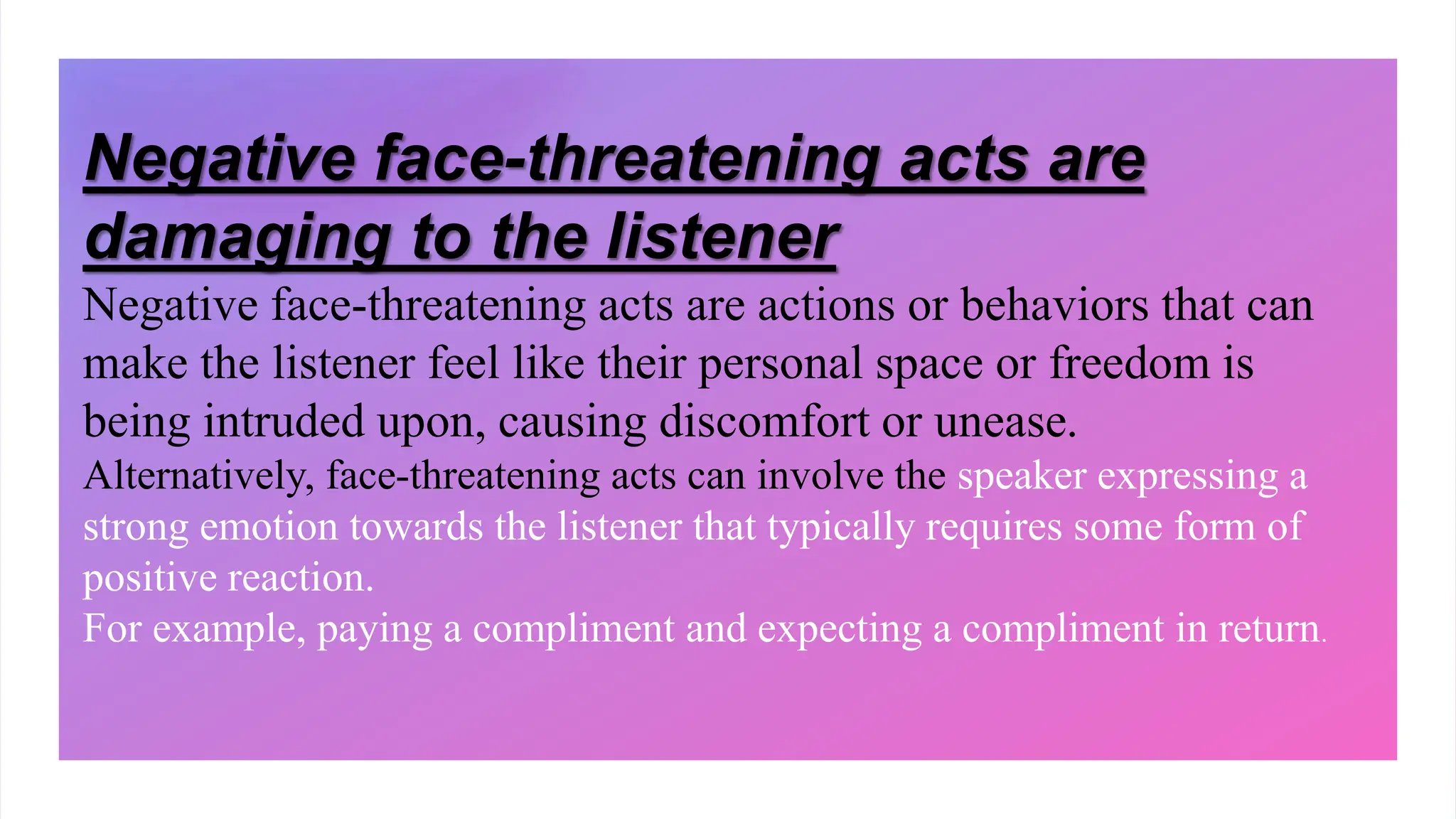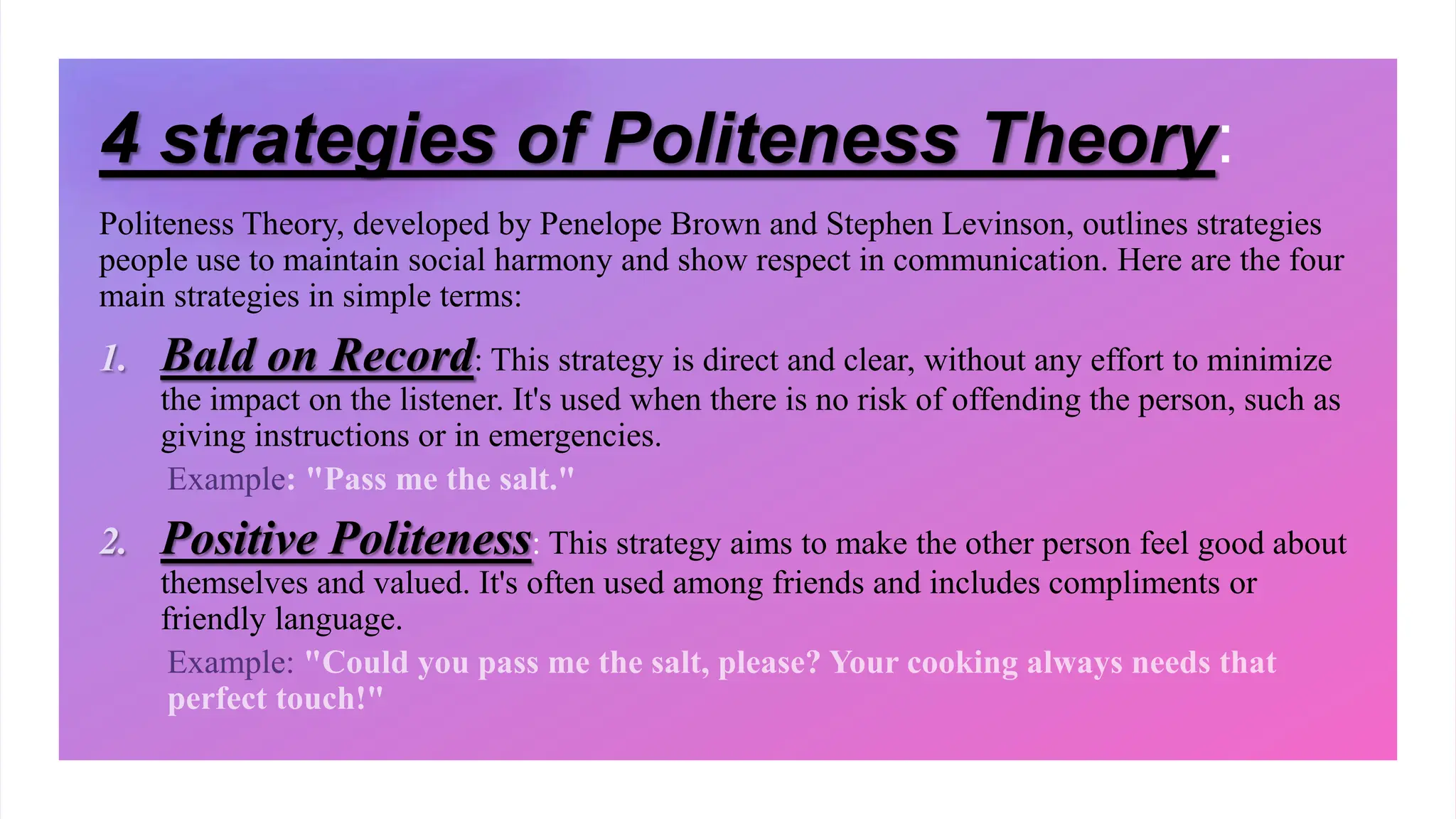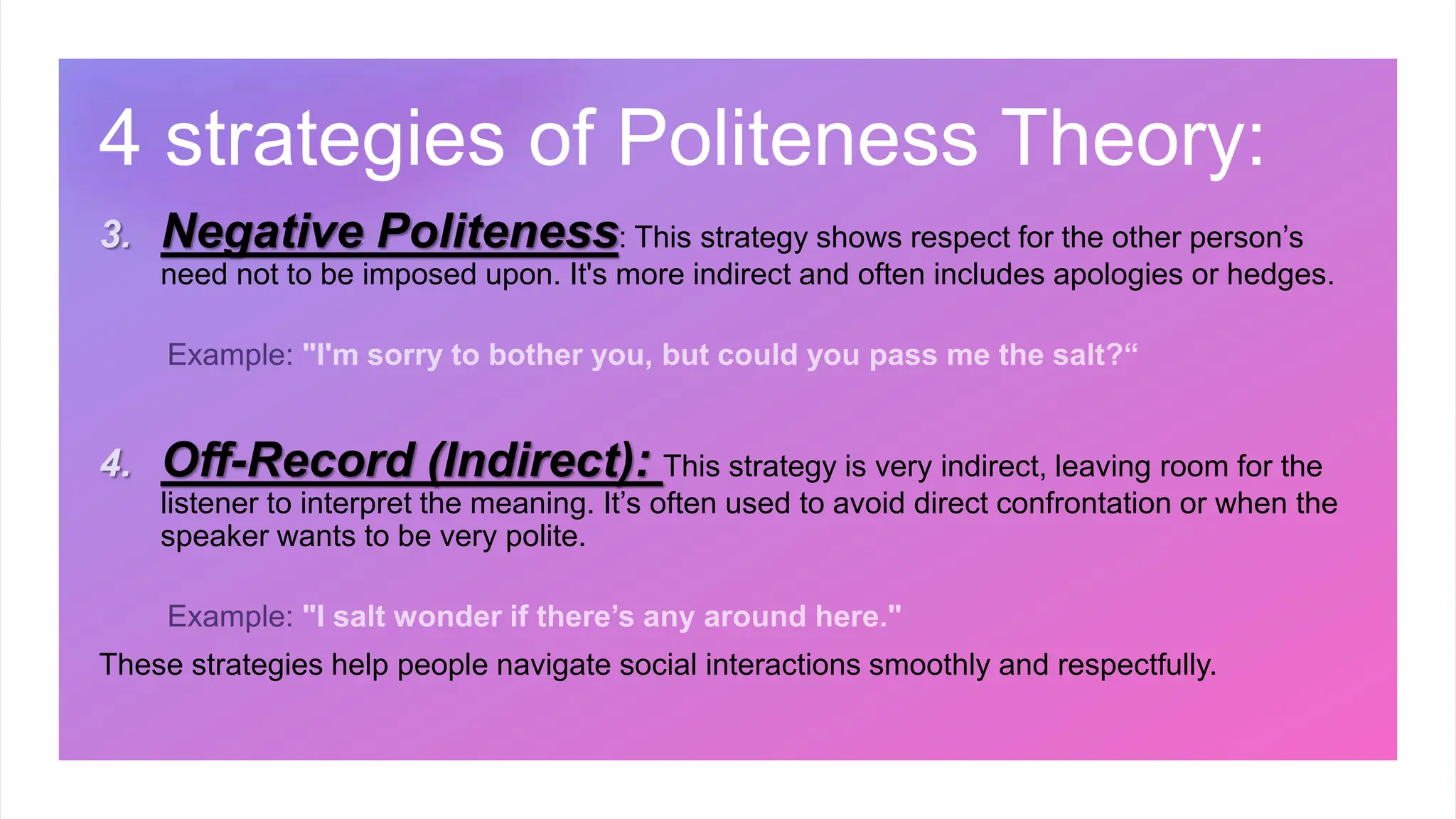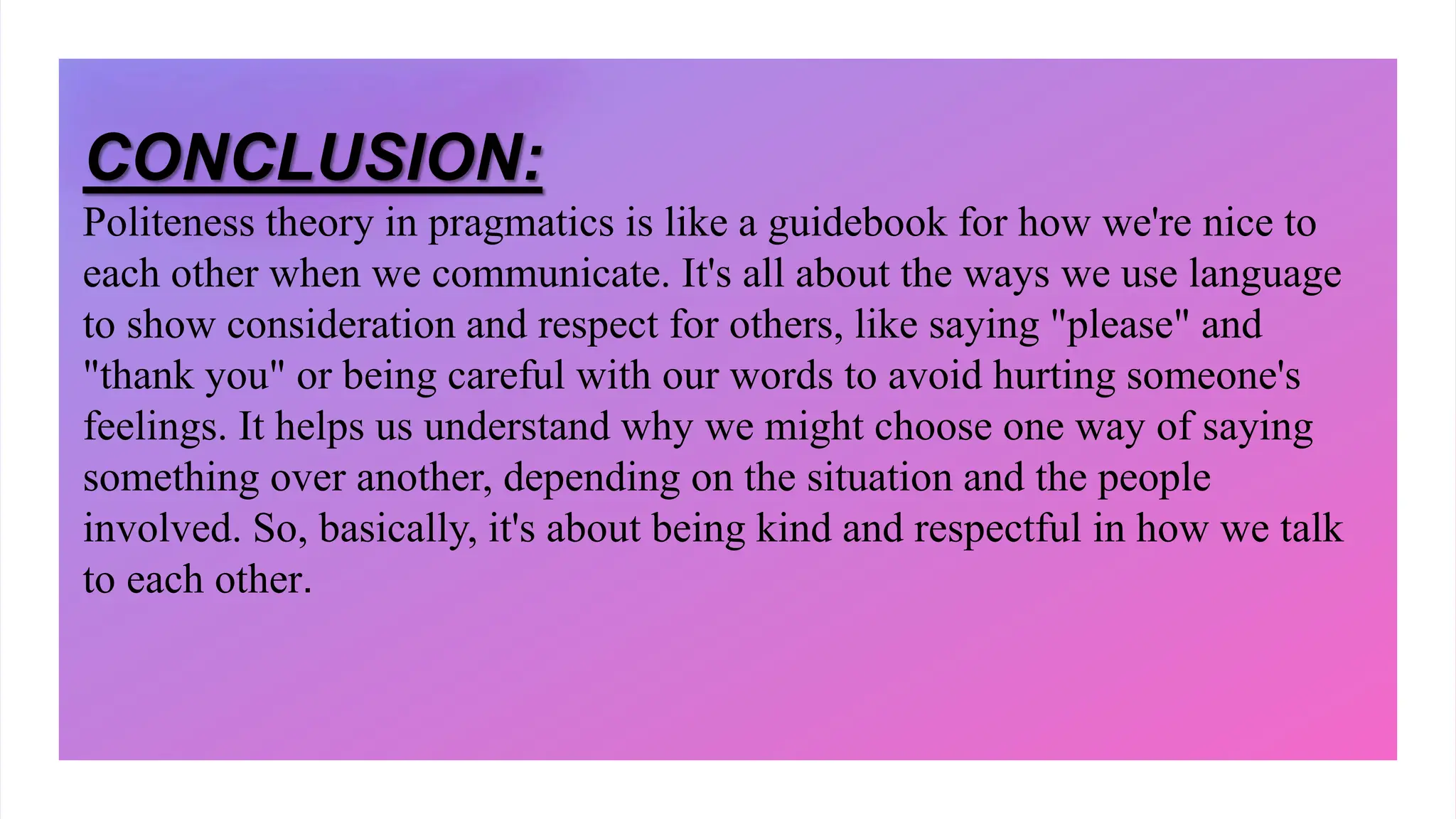Politeness theory, developed by Penelope Brown and Stephen Levinson, is a key aspect of pragmatics that explores how individuals strive for politeness in communication to maintain social harmony. The theory distinguishes between two types of 'face': positive face, the desire to be liked, and negative face, the desire for autonomy, with strategies like positive politeness and negative politeness reflecting these needs. The document outlines various face-threatening acts and four main politeness strategies used in social interactions to ensure respectful communication.
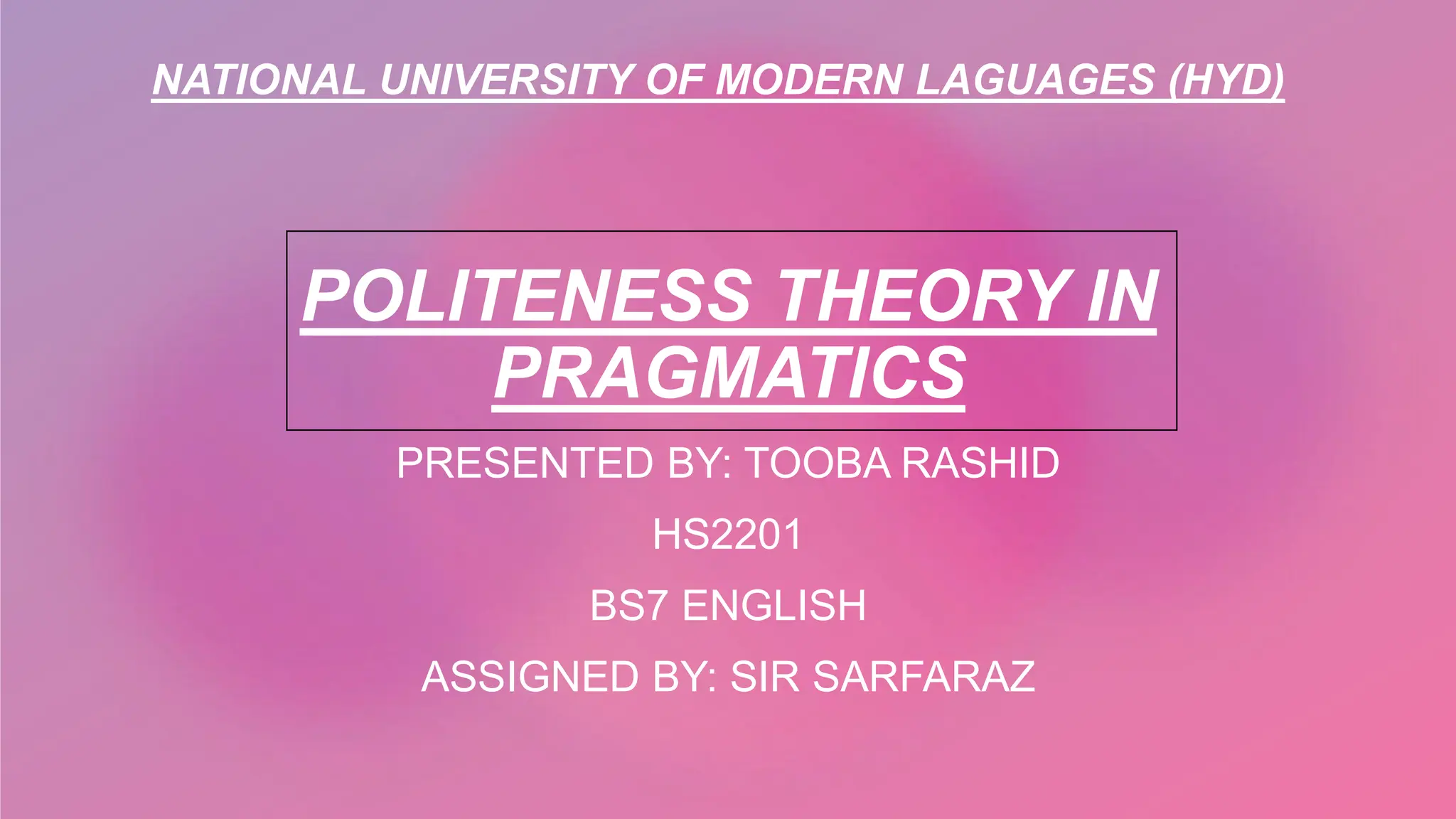
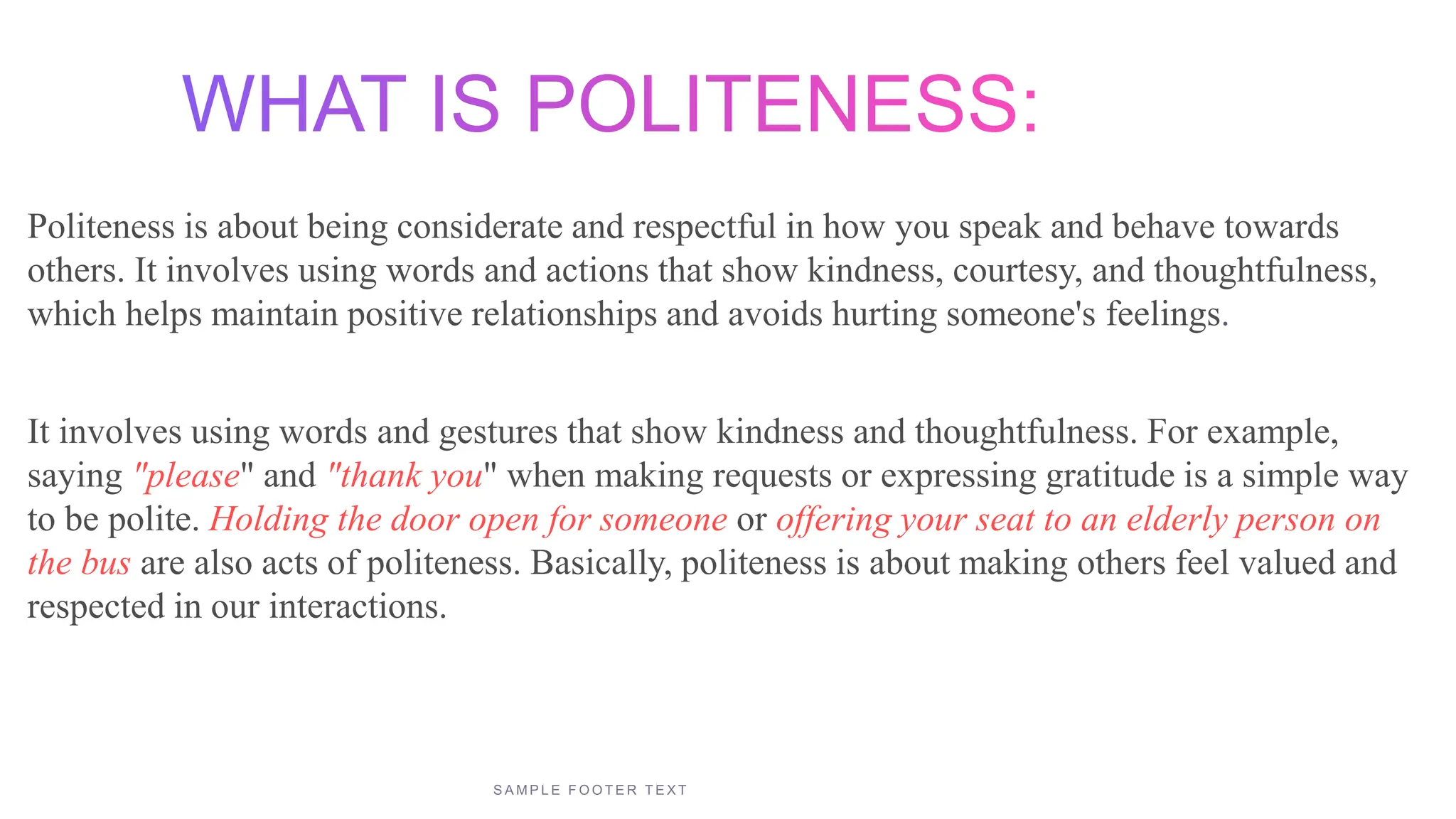
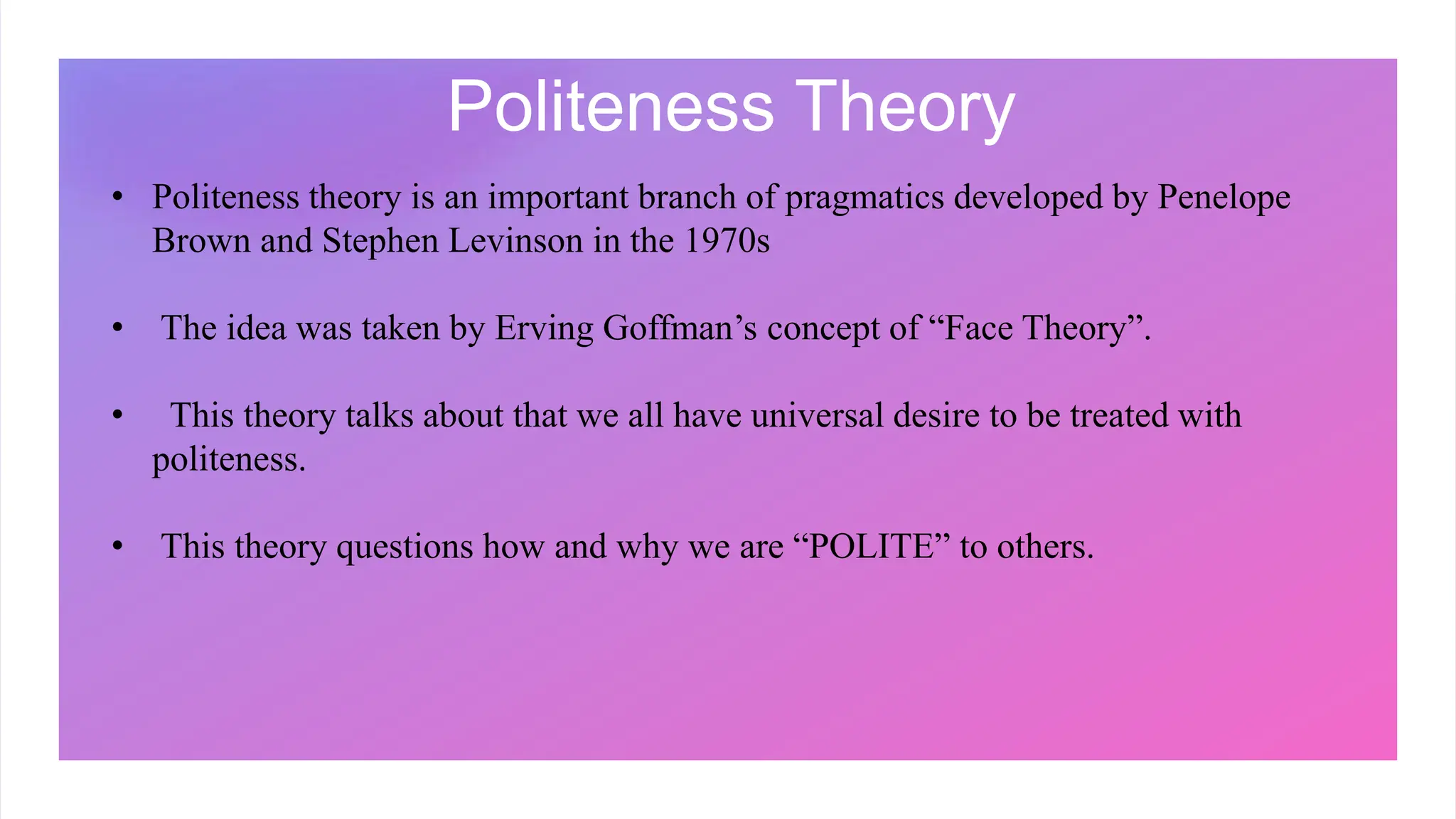
![GOFFMAN’S CONCEPT OF FACE:
• Goffman (1955) defines face in the concept of face
theory as "The positive public image [we] seek to
establish in social interactions." It's also helpful to
think of face as 'self-image'. Naturally, most of us want
to protect our self-image and wish to portray a positive
image of ourselves to others.](https://image.slidesharecdn.com/toobarashid-240515180141-a78a6f1e/75/POLITENESS-THEORY-IN-PRAGMATICS-BY-TOOBA-4-2048.jpg)
